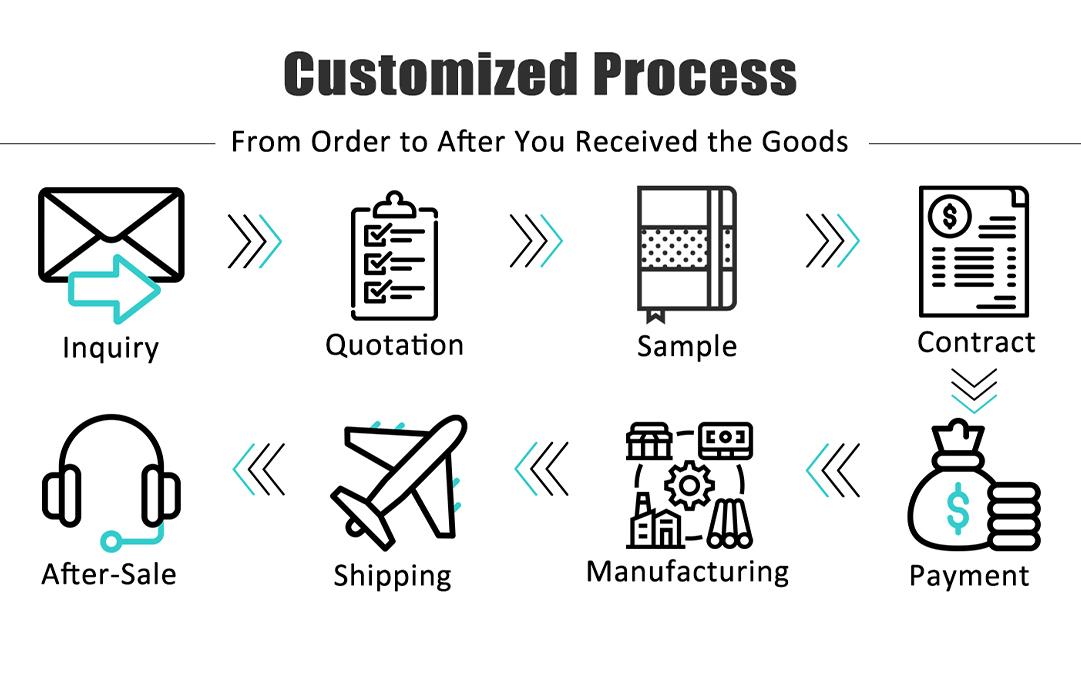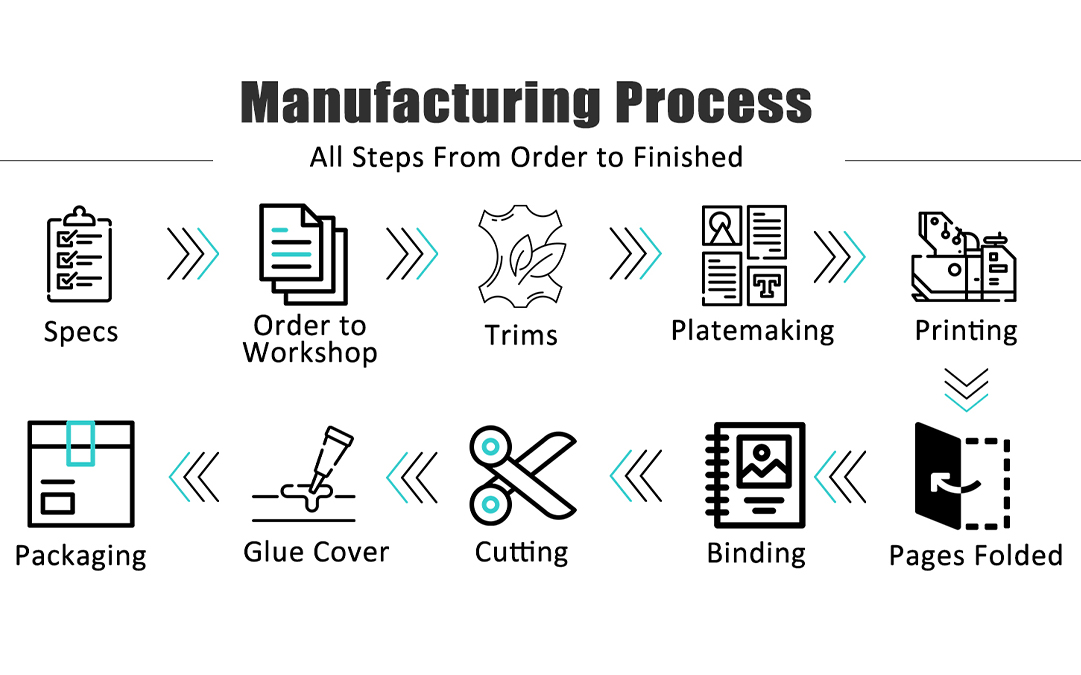8 ways to select the best materials for my custom notebooks print
Are you contemplating creating your own custom notebooks print but feeling overwhelmed by the myriad of material options available? Choosing the right materials is crucial for achieving the desired quality and functionality of your notebook prints. In this guide, we’ll delve into eight key aspects to consider when selecting materials for your notebook printing project.
- Paper Quality: The foundation of any notebook lies in its paper quality. Consider factors such as weight, texture, and opacity to ensure the paper is suitable for your intended use. A heavier weight paper with a smooth texture is ideal for writing, while a more textured paper may be preferable for sketching or drawing. Usually for notebook usage, there are paper gram wight from 80gsm to 120gsm, thicker of 140gsm also ok. The notebook manufacturing paper material usually use Offset paper/Acid-free paper/Tomoe river paper/Fancy paper. Also, there are different paper color of Solid white, Off-white paper(cream/ivory or other name)More information or paper requests could contact our pritning consultant Ms. Rimo Lau.
- Print Method: The printing method used can significantly impact the final result of your notebook. Digital printing offers versatility and precision for intricate designs, while offset printing is better suited for larger quantities with consistent quality. Choose the method that best aligns with your design requirements and budget.
- Cover Material Options: The cover material not only protects the pages within but also contributes to the overall aesthetic appeal of the notebook. Options range from sturdy cardstock to luxurious leather, each offering unique benefits in terms of durability and visual appeal. Consider the intended use and target audience when selecting the cover material.
There are some notebook cover material option:
– Leather(Pull-Up leather with logo debossed, stamping, printing, engraved and other you want, there are different color and textured options, more could contact Ms. Rimo Lau )
– Linen(Different color, textured or rough difference)
– Paper(normal paper with printing, fancy paper or other)
– Cork
– Bamboo - Binding Techniques: The binding method plays a crucial role in determining the durability and usability of the notebook.
– Spiral binding allows for easy page-turning and lay-flat usage.
– While perfect binding provides a sleek and professional finish.
– Sewn and glue binding is lay-flat with durable and no wire to make it easy when write at left side
– Loose leaf binding could refill pages when run out, also adjust the pages order when you do
– Disc bound, new binding requests could refill page and adjust pages order, while have high printing quantity requests.
Choose the binding technique that best complements your design and functional preferences. Of course if you don’t have idea, could contact our manager to provide some good idea. Ms. Rimo Lau - Environmental Considerations: As sustainability becomes increasingly important, opt for eco-friendly materials and printing practices whenever possible. Recycled paper and vegetable-based inks reduce environmental impact without compromising print quality. Demonstrating a commitment to sustainability can also resonate with environmentally conscious consumers.
- Customization Possibilities: Personalize your notebooks with various customization options such as foil stamping, embossing, or die-cutting. These embellishments not only enhance the visual appeal but also create unique branding opportunities. Consider how customization can elevate the overall design and appeal of your notebooks.
- Cost vs. Quality: Balancing cost considerations with desired quality is essential when selecting materials for notebook printing. While premium materials and finishes may come with a higher price tag, they often result in a more visually appealing and durable product. Evaluate your budget and prioritize areas where quality is paramount.
If don’t know how to move to appreciate your budget or funding, could contact us, will provide suitable idea and do sample first to checking final style based our professional Ms. Rimo Lau - User Experience: Ultimately, the user experience should guide your material choices to ensure satisfaction with the final product. Consider factors such as paper weight, texture, and cover durability to enhance writing comfort and overall usability. Strive to create a notebook that not only looks great but also feels great to use.
In conclusion, selecting the best materials for your notebook print involves careful consideration of various factors, from paper quality to customization possibilities. By taking into account these eight key aspects, you can create custom notebooks that are not only visually appealing but also functional and sustainable. So go ahead, unleash your creativity, and bring your notebook printing project to life!
Contact Us: Ms. Rimo Lau WhatsApp Me
Whatsapp: 0086 18336352791 – WeChat&Phone
Website: www.fullcolorprintstationery.com
E-Mail: [email protected]





